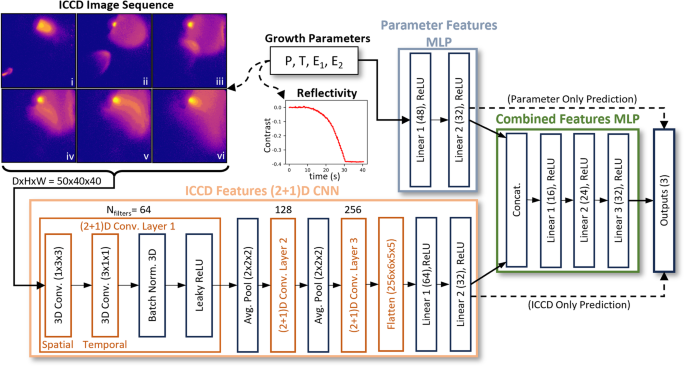2024-09-16 オークリッジ国立研究所(ORNL)
<関連情報>
- https://www.ornl.gov/news/ai-enhances-plasma-plume-analysis
- https://www.nature.com/articles/s41524-024-01275-w
パルスレーザー堆積中の異常検出と成長動力学予測のためのプラズマプルーム画像シーケンスによるディープラーニング Deep learning with plasma plume image sequences for anomaly detection and prediction of growth kinetics during pulsed laser deposition
Sumner B. Harris,Christopher M. Rouleau,Kai Xiao & Rama K. Vasudevan
npj Computational Materials Published:14 May 2024
DOI:https://doi.org/10.1038/s41524-024-01275-w

Abstract
Materials synthesis platforms that are designed for autonomous experimentation are capable of collecting multimodal diagnostic data that can be utilized for feedback to optimize material properties. Pulsed laser deposition (PLD) is emerging as a viable autonomous synthesis tool, and so the need arises to develop machine learning (ML) techniques that are capable of extracting information from in situ diagnostics. Here, we demonstrate that intensified-CCD image sequences of the plasma plume generated during PLD can be used for anomaly detection and the prediction of thin film growth kinetics. We develop multi-output (2 + 1)D convolutional neural network regression models that extract deep features from plume dynamics that not only correlate with the measured chamber pressure and incident laser energy, but more importantly, predict parameters of an auto-catalytic film growth model derived from in situ laser reflectivity experiments. Our results demonstrate how ML with in situ plume diagnostics data in PLD can be utilized to maintain deposition conditions in an optimal regime. Further, the predictive capabilities of plume dynamics on the kinetics of film growth or other film properties prior to deposition provides a means for rapid pre-screening of growth conditions for the non-expert, which promises to accelerate materials optimization with PLD.



